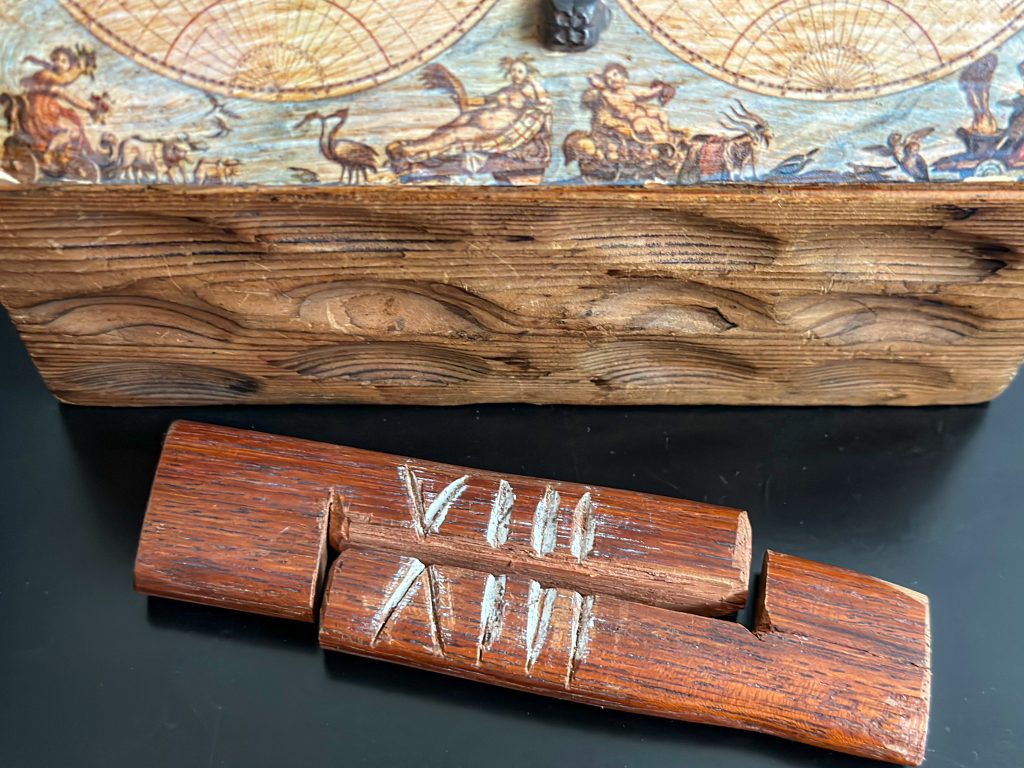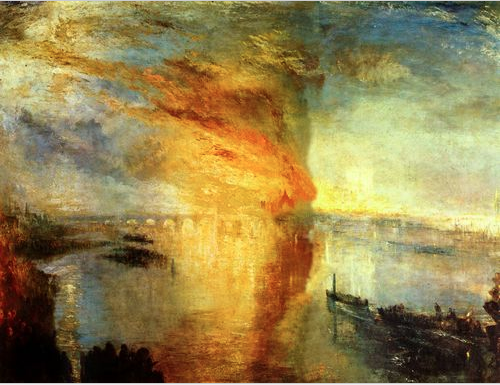The Tally

For all those who do not yet have Bitcoins and do not program themselves on a laptop: the blockchain is a form of digital documentation of the ownership and transfer of assets, but in addition to monetary values, these can also authenticate rights to pictures, land ownership or even cows. And that’s exactly what our forefathers had the tally for – only as analog documentation.
For thousands of years the central tool of “accounting”, the term tally is today only known through the phrases “keeping tally”, meaning noting the score or amount and “tallying up”, meaning totalling up a number of items, or to “tally”, meaning to agree with another statement.
The term has not disappeared completely, but it is highly endangered and thus goes on my list of endangered words. For the principle of notched wood, once widespread throughout the world, has survived in English just in this idiom, though you can also “notch up” an achievement. Tallies have an interesting history and have been used in a wide variety of cultures.
In its simplest version, the tally is a simple wooden stick on which notches were cut. Each notch on the tally represents a certain value or work progress. It was widely used in Europe in the Middle Ages and served as a reliable instrument for officials to record quantities, debts and payments. In this largely illiterate and coin-poor Europe, the use of the notched stick was common from the 10th century on. In medieval courts, the notched stick – like a promissory bill – was accepted as evidence.
Marco Polo mentions in his travelogue the use of the tally in the empire of Kublai Kahn. In South America, on the other side of the world, Incas knotted their accounts in quipus (coloured strings). The use of notched sticks is also common among sailors and craftsmen, who often had to go for long periods without money, i.e. coins. Paper money did not yet exist. The oldest evidence of a type of notched stick, however, comes from what is now the Democratic Republic of the Congo and is an incredible 20,000 years old. Instead of wood, a bone was used here, but the Ishango bone was also functionally a tally.
But even if 20,000 years is really long ago, with Germany’s direct southern neighbors the tally was still used in the 20th century. Especially in alpine dairies and agriculture, it was still used to document payments in kind, grazing rights or the size of the herd.
However, the tally was not without its flaws. It was susceptible to fraud and forgery because it was relatively easy to add or remove simple notches. Some evidence suggests that a further development, the split tally, came to Western Europe from the Danube region, the blockchain of the Middle Ages, so to speak. Here, after documenting the desired information, the notched stick was cut in half and given to the two contracting parties. Both contracting parties now had one half of the tally each, and only when both halves of the wood were joined together was the contract complete, and until then it could not be changed unilaterally.
In England, it was still customary to issue tax receipts in the form of notched sticks until the 19th century. In the context of a tax reform in 1834, this time-consuming procedure was finally replaced by a somewhat dated innovation by a certain Gutenberg around 1450, by tax receipts on paper. The tax authority needed quite a lot of space to archive the old sticks and decided to part with a part of old tax receipts/tallies, which was fatal. For on October 16, 1834, these were ceremoniously burned in the courtyard of the Palace of Westminster, when it was itself caught in the flames and burned to the ground.
William Turner was inspired by this, painted a whole series of pictures of the Houses of Lords and Commons on fire and advanced to the most successful motif and marine painter in England.

It only goes to show that Guy Fawkes should have consulted a banker.
Original text: UTO
English translation: BCO
Bildquellen
- Kerbholz BCdMA: UTO
- Turner: William Turner / Zeno.org

